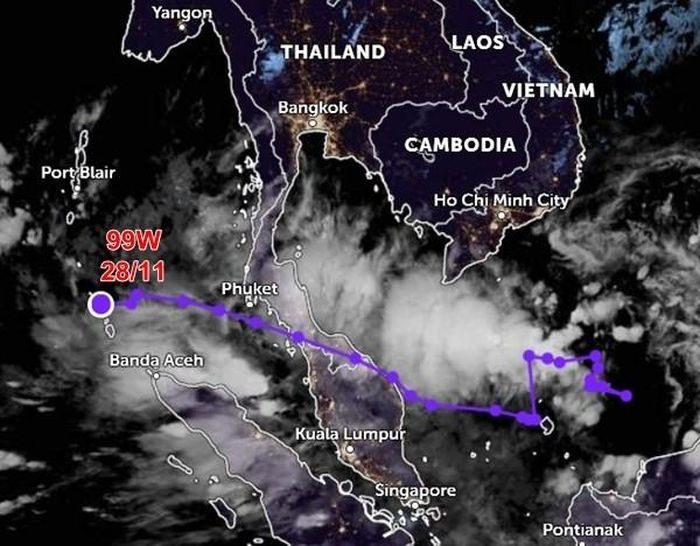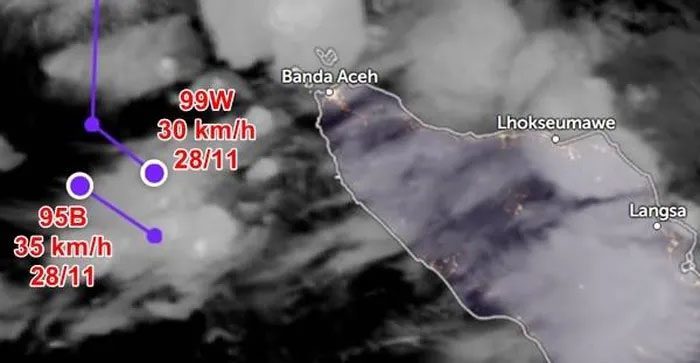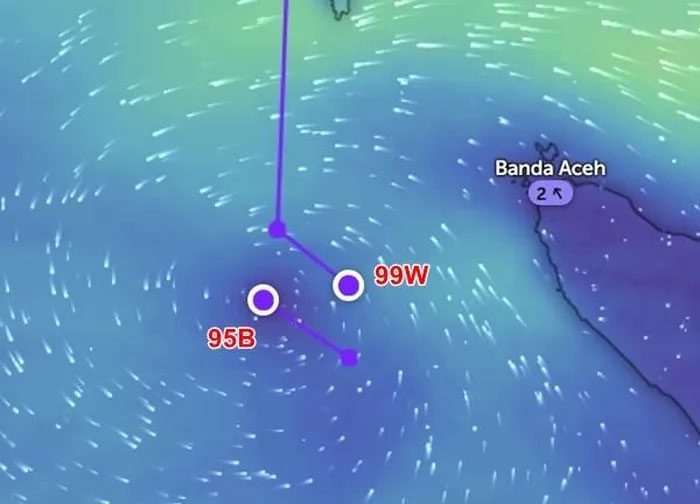Not only has the unusual path of the storm deviated from forecasts, but the low-pressure system originating from the South China Sea a few days ago has also changed direction unexpectedly. At the same time, a new low-pressure system has formed nearby, potentially leading to a rare weather phenomenon.
The low-pressure system known as 99W, which formed in the South China Sea about a week ago, initially positioned between Vietnam and Malaysia, has proven difficult to predict as it traveled approximately 3,000 km and reached the Indian Ocean by the morning of November 28.
While meteorological agencies anticipated that low-pressure system 99W would continue moving westward, it again displayed its unpredictable nature by suddenly turning south and then shifting southeast in the afternoon of November 28, when it was located near Indonesia.

Low-pressure system 99W moving from the South China Sea to the Indian Ocean. (Image: Zoom Earth, JMA).
At the same time, a new low-pressure system formed close to 99W. This new system, referred to as 95B, had wind speeds of 35 km/h by the evening of November 28. 95B is currently moving northwest, which is opposite to the direction of 99W. Interestingly, the paths of these two low-pressure systems from the afternoon into the night of November 28 formed two perfectly parallel lines. As of the evening of November 28, the two systems were only about 60 km apart. Two low-pressure systems moving in parallel but in opposite directions, looking very unusual. (Image: Zoom Earth, JMA).
Two low-pressure systems moving in parallel but in opposite directions, looking very unusual. (Image: Zoom Earth, JMA).
According to the U.S. Joint Typhoon Warning Center (JTWC), both low-pressure systems 99W and 95B have little to no chance of developing into a storm in the next 24 hours. However, if they strengthen, they could interact, leading to a rare phenomenon where they merge into a more powerful low-pressure system, potentially even becoming a storm. There is also a lower possibility that this interaction could change the direction of one or both low-pressure systems.

Image of winds swirling around the two low-pressure systems. (Image: Zoom Earth, OpenStreetMap).
The interaction mentioned above depends on many factors, such as the intensity and size of the two low-pressure systems, the distance between them, and the atmospheric conditions surrounding them. Therefore, meteorological agencies are currently monitoring these two systems and have not yet provided specific forecasts, especially as weather phenomena are becoming increasingly unpredictable.




















































